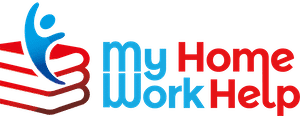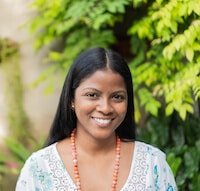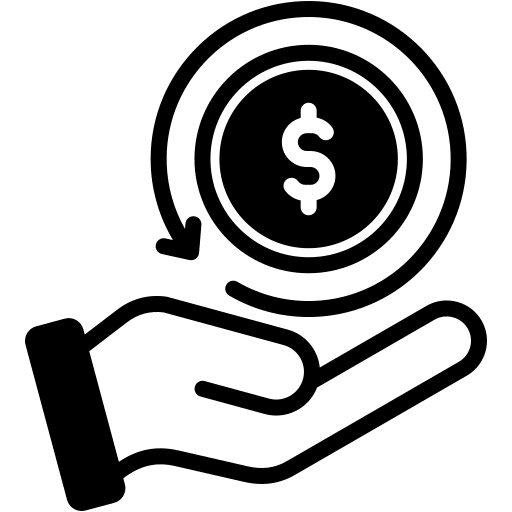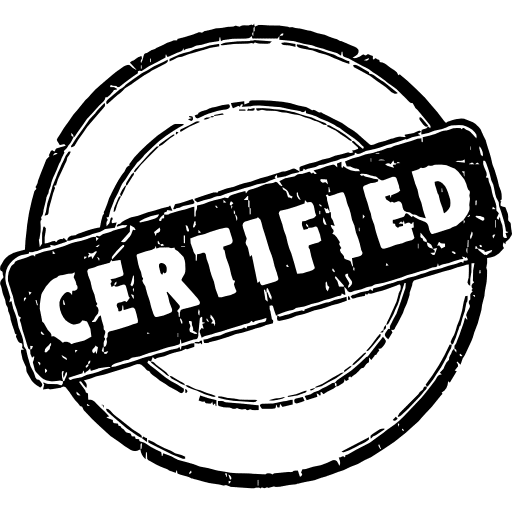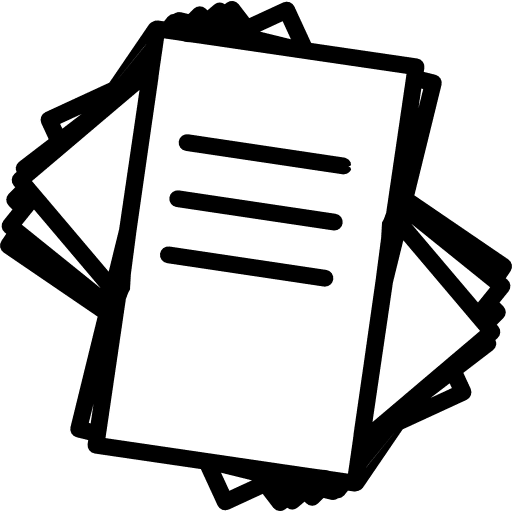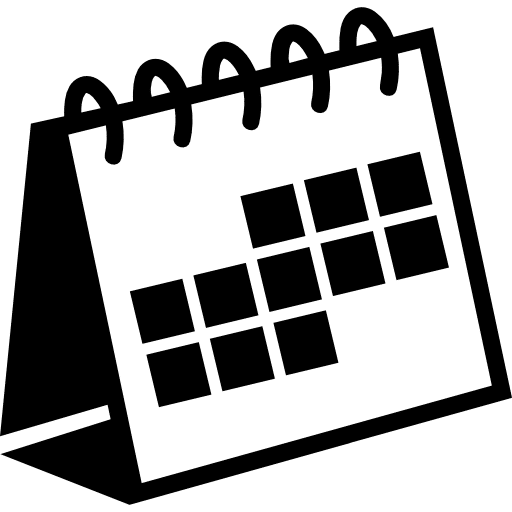Test Question:
- What do you understand by Capital Budgeting?
- Define Capital Budgeting
- List out the concept of Capital Expenditure
- Explain in brief that advantages of Capital Budgeting
- What is the need and importance of Capital Budgeting?
- List out the limitations of Capital Budgeting
- Explain the principle methods required for determining the profitability of any capital expenditure project.
- Compare the internal rate of return method and net present value method
- Explain- “Capital budgeting is the long-term planning to maintain the allocation of capital in different sectors of the ” What are its limitations?
- “For most of the investment decisions, either anorganization faces superior decision criterion for net present value or is at least good as a competing technique.” Explain the investment situation when the profitability index is better than net present value.
- Explain the circumstances for conflicting NPV and IRR methods recommendations. Tell us how these circumstances should overcome and why.
- How is the capital expenditure controlled in large scale organizations? Explain in steps.
Some Problems with their Solutions
Problem No. 1
For the below table, the cash outlay of $10,000 requires for each project. If the standard pay back period is 5 years, then which project should be accepted?
Year Project X ($) Project Y ($) Project Z ($)
1 2500 4000 1000
2 2500 3000 2000
3 2500 2000 3000
4 2500 1000 4000
Solution:
In the above table, all three projects have recovered their capital investment of $10,000 within the duration of 4 years. It has been found that Project X follows constant cash inflows whereas the project Y shows continuous decrease in their cash inflows. Considering the fact of Project Z, it shows gradual increase of cash flow every year.
Here, the project X shows the constant return point of view in every year. Thus, it is recommended.
Problem No. 2
A company has two projects with a tax rate of 50%. From the below table, the data will highlightits statistics.
Cash Inflows (Profit before Depreciation and Tax)
Year Project A Project B
$ $
0 15,000 15,000
1 4,200 4,200
2 4,800 4,500
3 7,000 4,000
4 8,000 5,000
5 2,000 10,000
Determine the depreciation rate on straight line basis using pay back period as criterion.
Solution:
- For Project A:
(–) Add Cash Cumulative
Year Profit Depreciation PAD Tax PAT Depreciation InflowsCash Inflows
$ $ $ $ $ $ $ $
1 4200 3000 1200 600 600 3000 3600 3600
2 4800 3000 1800 900 900 3000 3900 7500
3 7000 3000 4000 2000 2000 3000 5000 12500
4 8000 3000 4000 2000 2000 3000 5000 17500
5 2000 3000 –1000 – 3000 2000 19500
Where,
PAD = Profit After Depreciation
PAT = Profit After Tax
Pay back period = 3 years and 6 months
Result:
Investment is $15,000
Capital Recovered in first three years is $12,500
During 4th year, balance of $2500 is recovered
1st Year 3,600
2nd Year 3,900
3rd Year 5,000
12,500
Balance 2,500
15,000
12 months/ 5,000 x 2,500 = How many months?
Thus, the time taken to recover the amount of $2,500 will be 6 months.
Hence, pay back period = 3 years 6 months
- Project B
Similarly,
(–) Add Cash Cumulative
Year Profit Depreciation PAD Tax PAT Depreciation InflowsCash Inflows
$ $ $ $ $ $ $ $
1 4200 3000 1200 600 600 3000 3600 3600
2 4500 3000 1500 750 750 3000 3700 7350
3 4000 3000 1000 500 500 3000 3500 10850
4 5000 3000 2000 2000 1000 3000 4000 14850
5 1000 3000 7000 7000 3500 3000 6500 21350
Note:
If necessary, then cumulative cash inflows should be prepared.
Here, Pay back period = 4 years and 8days
Result:
Investment is $15,000
Capital Recovered is $15,000
1st Year 3,600
2nd Year 3,750
3rd Year 3,500
4th Year 4,000
14,850
Balance 150
15,000
Time taken to recover the amount of $150 = 8days
For recovery of amount $6,500 in the 5th Year, time required = 365 days
For recovery of amount $15 in the 5th Year, time required = 8 days
Depreciation Project A Project B
Cost/ Life 15000/ 5 15000/ 5
= $3,000 = $3,000
Problem No. 3:
From the information given below, you have to determine the pay back period using:
- Traditional pay back method
- Discounted pay back method
Initial Outlay Estimated Life 5 Years $80,000
Profit After Tax Year 1 $6,000
End of the Years 2 $14,000
3 $24,000
4 $16,000
5 NIL
Take the cost of capital 20% per annum and PV of Re. 1 at this rate. Calculate depreciation under straight line method.
Year 1 2 3 4 5
p/v factor .83 .69 .58 .48 .40
Solution:
Before Add Profit Depreciation p/v factor present
Year PAT Depreciation but after tax at 20% value
$ $ $ $ $
1 6,000 +16,000 = 22,000 .83 18,260
2 14,000 +16,000 = 30,000 .69 20,700
3 24,000 +16,000 = 40,000 .58 23,200
4 6,000 +16,000 = 22,000 .48 15,360
5 NIL +16,000 = 16,000 .40 6,400
Total present value = 83,920
Less : Initial Investment = 80,000
Net Present Value = 3,920
- Traditional pay back method:
1st Year $22,000
2nd Year $30,000
Amount recovered for 2 years $52,000
Balance $28,000
$80,000
3rd Year profit is $40,000, but we require $28,000 to meet the original investment of $80,000
Hence, it can be written as,
12 months/ 40,000 x 28,000 = How many months?
= 2 years 8 months
- Discounted pay back method:
1st Year $18,260
2nd Year $20,700
3rd Year $23,200
4th Year $15,360
Balance $77,520
Project Cost $2,480
$80,000
In the 5th year, the cash inflow is $6,400, but for $2,480 to meet the original investment of $80,000
Hence, it can be written as,
12 months/ 6,400 x 2,480 = How many months?
= 4 years 4 months
Note:
Cost/ Life = 80,000/ 5
= 16,000
Problem No. 4:
Two competing proposals require an equal investment of $50,000. It is expected to produce net cash flows based on the following data:
Year Project I Project II p/v at 10% per annum
$ $ $
1 25,000 10,000 .909
2 15,000 12,000 .826
3 10,000 18,000 .751
4 NIL 25,000 .683
5 12,000 8,000 .621
6 6,000 4,000 .564
Determine the project proposals using discounted cash flow methods. Tell us which one to choose and why.
Solution:
Year Project I Project II
$ $
1 25,000 10,000
2 15,000 12,000
3 10,000 18,000
4 NIL 25,000
5 12,000 8,000
6 6,000 4,000
- a) Finding pay back period using traditional method:
Project I
1st Year $25,000
2nd Year $15,000
3rd Year $10,000
$50,000
Here, pay back period is 3 years.
Project II
1st Year $10,000
2nd Year $12,000
3rd Year $18,000
$40,000
Balance $10,000
$50,000
Here, pay back period can be obtained by,
2/ 25,000 x 10,000 = 4 years
Thus, as per the traditional method, Project I will be recommended because of its shorter pay back period.
- Discounted cash flow method:
For Project I:
Cash Discount Present
Year Inflows Factor Value
at 10% p.a.
$ $ $
1 25,000 .909 22,725
2 15,000 .826 12,390
3 10,000 .751 7,510
4 NIL .683 –
5 12,000 .621 7,452
6 6,000 .564 3,384
Total Present Value = $53,461
Less : Original Cost = $50,000
Net Present Value = $3,461
Criteria pay back period for Project I is 3years
For Project II:
Cash Discount Present
Year Inflows Factor Value
at 10% p.a.
$ $ $
1 10,000 .909 9,090
2 12,000 .826 9,912
3 18,000 .751 13,518
4 25,000 .683 17,075
5 8,000 .621 4,968
6 4,000 .564 2,256
Total Present Value = $56,819
Less : Original Cost = $50,000
Net Present Value = $6,819
Criteria pay back period for Project II is 3years 4 months
Note:
If considering the pay back period, then Project I is recommended. But, if considering the NPV, then Project II is recommended. This is because of surplus value in Project II i.e., $6,819.
Project 5:
Calculate the pay back period for a project whose cost is $5,00,000. It yields annual profit of $80,000 after its depreciation at 12% per annum before tax rate of 50%.
Solution:
Pay back period = Original Cost/ Annual Cash Inflows
Initial Investment = $5,00,000
Cash inflows = Profit after tax plus Depreciation
Profit Before Tax 80,000
Less: Tax 50% 40,000
Profit After Tax 40,000
Add: Depreciation 60,000
Annual Cash Inflows 1,00,000
Hence, Pay back period = 5,00,000/ 1,00,000
= 5 years
Note:
Depreciation = 5,00,000 x 12/ 100
= 60,000
Problem No. 6
Calculate the net income before depreciation and tax of ABC Ltd. This company needs an initial investment of $40,000 for the project.
Year $
1 10,000
2 12,000
3 14,000
4 16,000
5 20,000
Determine the project proposal considering Accounting Rate of Return Method.
Solution:
Year Net Income Less Profit Less Tax Profit After
Before Depreciation after 50% Tax and
Depreciation Depreciation Depreciation
and Tax ($) ($) ($) ($) ($)
1 10,000 8,000 2,000 1,000 1,000
2 12,000 8,000 4,000 2,000 2,000
3 14,000 8,000 6,000 3,000 3,000
4 16,000 8,000 8,000 4,000 4,000
5 20,000 8,000 12,000 6,000 6,000
Accounting Rate of Return Method
- Return on Average Investment Method
Return = Average Profit
= Total Profit/ Number of years
= 16,000/ 5
= 3,200
Average Investment = Original Investment/ 2
= 40,000/ 2
= 20,000
Return on Average Investment = 3,200 x 100/ 20,000
= 16%
Problem No. 7
Swamy Industries Ltd purchased a machine with aproposal to replace it with a new machine five years ago. This machine canbe sold at its original price where its life is estimated to have 10 years. Suppose you are a cost account. Submit your recommendations after going through the available data below.
Particulars Existing Machine New Machine
$ $
Initial 25,000 50,000
Machine hours p.a. 2,000 2,000
Wages per running hour 1.25 1.25
Power per hour .50 2.00
Indirect material p.a. 3,000 5,000
Other expenses p.a. 12,000 15,000
Cost of materials per unit 1 1
Number of units
produced per hour 12 18
Selling price per unit 2 2
On fresh capital invested, the interest rate will be of 10%.
Solutions:
Statement of Profit and Cost:
Particulars Existing Machine New Machine
$ $
Production p.a. (units) 24,000 36,000
Selling price per unit 2.00 2.50
Sales Value 48,000 72,000
Expenses:
Materials 24,000 36,000
Wages 2,500 2,500
Power 1,000 4,000
Indirect material 3,000 5,000
Other expenses p.a. 12,000 15,000
Depreciation 2,500 5,000
Interest – 3,750
45,000 71,250
Sales 48,000 72,000
Less : Total Cost 45,000 71,250
Total profit 3,000 750
Cost per unit 1.87 1.98
Profit per unit 0.13 0.02
Result:
Particulars Existing Machine New Machine
Cost of material (24,000 x 1) 24,000 36,000 (36,000 x 1)
Wages (2,000 x 1.25) 2,500 2,500 (2,500 x 1.25)
Power (2,000 x .50) 1,000 4,000 (2,000 x .2)
Cost per unit =
(Total Cost/ No. of Units) 45,000/ 24,000 = 1.87 71,250/ 36,000 = 1.98
Interest Calculation:
Investment in New Machine 50,000
Less : Sale Value of Old Machine 12,500
Depreciation 25,000
Fixed Installment System 12,500
Hence, 5,000/ 2500 x 5 = 10
Fresh Installment 37,500
i.e., interest rate on fresh installment at 10% will be,
37,500 x 10/ 100 = 3,750
Note:
Depreciation Old Machine New Machine
= Cost/ Life
- 25,000/ 10 = 2,500 50,000/ 10 = 5,000
Problem No. 8
Given below are the data of a project. Rank accordingly!
- Pay back
- Accounting rate of return method
- Net present value
Particulars Year Project A Project B Project C
$ $ $ $
Investment 0 30,000 30,000 30,000
Annual Savings 1 13,800 36,150 –
2 13,800 – –
3 13,800 – 46,827
The discount factor for each year is 0.909, 0.826 and 0.751 respectively.
Solution:
- Pay back
Year Project A Cumulative Project B Project C
Cash Inflows Cash Inflows Cash Inflows Cash Inflows
1 13,800 13,800 36,150 –
2 13,800 27,600 – –
3 13,800 41,000 – 46,827
Now,
1st Year + 2nd Year = 13,800 + 13,800
= 27,600
Balance = 2,400
30,000
12/ 13,800 x 2,400 = 2 months 8 days, this means 2 years 2 months 8 days
12/ 36,150 x 30,000 = 10 months
12/ 46,827 x 30,000 = 7 months 23 days
- Accounting Rate of Return Method:
Return/ Original Cost Investment x 100
Project A = 13,800/ 30,000 x 100
= 46%
Project B = 12,050/ 30,000 x 100
= 40.16%
Project C = 15,609/ 30,000 x 100
= 52.03%
- Net Present Value:
As the cost of capital is not provided, let us assume 10% cut off rate. Now, according to the formula,
Year Project A p.v. Discounted Project B Discounted Project CDiscounted Cash Factor Cash Factor Cash Factor
Inflows at 10% Inflows Inflows
$ $ $ $ $ $
1 13,800 0.909 1,254.20 36,150 32,860 – –
2 13,800 0.826 11,398.80 – – – –
3 13,800 0.751 10,363.80 – – 46,827 35,167
Particulars Project A Project B Project C
Total present value 34,306.80 32,860 35,167
Less : Initial Cost 30,000.00 30,000 30,000
Net Present Value 4,306.80 2,860 5,167
Now, Ranking will be
Project Pay Back Accounting Rate of Return NPV
A III II I
B II III III
C I I I
Note:
From the above table, it has been found that Project C is preferable. This is because the rank of Project C has come first in all three techniques. Hence, it is recommended.
Problem No. 9
Lal Ltd will soon purchase new machine to carry out the operations performed by labour. A and B are its alternative models.The following table has been given to find out the profitability statement, work out pay back period of the machine.
Particulars Machine A Machine B
Estimated life of machine (yrs.) 5 6
Cost of machine ($) 1,50,000 2,50,000
Cost of indirect materials ($) 6,000 8,000
Estimated savings in scrap ($) 10,000 15,000
Additional cost of maintenance ($) 19,000 27,000
Estimated savings in direct wages
employees not required (numbers) 150 200
Wages per employees ($) 600 600
Ignore depreciation for tax calculation. Take taxation at 50%. Recommend a model and state your reasons.
Solution:
Particulars Machine A Machine B
$ $
Cost of the machine 1,50,000 2,50,000
Savings
Estimated saving in scraps 10,000 15,000
Estimated saving in
Direct Wages (150 x 600) 90,000 1,20,000
Total Savings 1,00,000 1,35,000
Expenses 8,000 6,000
Cost of Indirect materials 27,000 19,000
Additional cost of maintenance 35,000 35,000
Total Expenses:
Saving 75,000 1,00,000
Less : Tax 50% 37,500 50,000
Net Saving (after tax) 37,500 50,000
Pay Back Period:
Original Cost/ Cash Inflow = 1,50,000/ 37,500 = 2,50,000/ 50,000
= 4 years for Machine A = 5 years for Machine B
As the pay back period for Machine A is4 years, it is recommended because of its shorter pay back period.
Note:
Here, the depreciation is not considered.
Problem No. 10
A Ltd company is ready to invest money in a new project that requires an initial capital of $2,00,000. The following table has been with data:
Year $
1 1,00,000
2 1,00,000
3 80,000
4 80,000
5 40,000
Consider 20% depreciation on original cost and 50% taxation of net income. Determine the following according to the above statistics
- Pay back method
- Rate of return on original investment
- Rate of return on average investment
- Discounted cash flow method with cost of capital at 10%
- Net present value index method
- Internal rate of return method
Solution:
Profitability Statement
Year Profit after Less PAT Add Profit before
Depreciation Tax Depreciation Depreciation
$ $ $ but after tax ($)
1 1,00,000 50,000 50,000 40,000 90,000
2 1,00,000 50,000 50,000 40,000 90,000
3 80,000 40,000 40,000 40,000 80,000
4 80,000 40,000 40,000 40,000 80,000
5 40,000 20,000 20,000 40,000 60,000
- Pay back period
1st Year 90,000
2nd Year 90,000
1,80,000
Balance 20,000
2,00,000
The balance amount that will be recovered from 3rd year will be,
12 months/ 80,00 x 20,000 = 3 months
This means,
Pay back period = 2 years 3 months
- Rate of return on original investment method
Year Net profit after tax and depreciation ($)
1 50,000
2 50,000
3 40,000
4 40,000
5 20,000
Total 2,00,000
We know that,
Rate of Return on Original Investment = Return/ Original Investment
Return represents the Average Return, it should be calculated by;
Total Return/ Number of Years = 2,00,000/ 5
= $40,000
Thus,
Rate of Return on Original Investment = 40,000/ 2,00,000 x 100
= 20%
- Rate of return on average investment method
Return = Average Investment x 100
Where,
Return = $40,000
Average Investment = Original Investment/ 2
= 2,00,000/ 2
= 1,00,000
Hence, Rate of Return on Average Investment = 40,000/ 1,00,000x 100
= 40%
- Discounted cash flow method with cost of capital at 10%
Year Cash Inflows Discount Factor Present Value at 10% p.a.
1 90,000 0.909 81,810
2 90,000 0.826 74,340
3 80,000 0.751 60,080
4 80,000 0.683 54,670
5 60,000 0.621 37,260
Total Present Value = $3,08,130
Initial Investment = $2,00,000
Net Present Value = 1,08,130
- Net present value index method
Total present value of cash inflows = Total present value of cash outflows
= 3,08,130/ 2,00,000
=1.541
Hence,
1.541 x 100 = 154.1%
- Internal rate of return method
As the annual cash inflows are not uniform, we will apply the formula,
Rate of Return, F = I/ C
Where,
F = Factor to be located
I = Initial Investment
C = Average Annual Cash Inflow
Hence,
F = 2,00,000/ 80,000
= 2.5
Showed in Table no. II, at this rate of return for 5 years is 28%
Now, discounted cash flow at 28% cost of capital
Year Cash Inflows Discount Factor Discounted Cash at 28% Inflows
1 90,000 0.781 70,290
2 90,000 0.610 54,900
3 80,000 0.477 38,160
4 80,000 0.373 29,840
5 60,000 0.291 17,460
Total Present Value = $2,10,650
Less: Initial Investment= $2,00,000
Excess Present Value = 10,650
Note:
As the present value if higher on $10,650, we will apply higher discount rate at 30% cost of capital.
Now, discounted cash flow at 30% cost of capital
Year Cash Inflows Discount Factor Discounted Cash at 30% Inflows
1 90,000 0.769 69,210
2 90,000 0.592 53,280
3 80,000 0.455 36,400
4 80,000 0.350 28,000
5 60,000 0.269 16,140
Total Present Value = $2,03,030
Less: Initial Investment= $2,00,000
Excess Present Value = 3,030
Note:
Thus, the excess present value comes $3,030 at 30% cost of capital. The internal rate of return will be then slightly greater than 30%. Moreover, small changes will not affect in huge level in the organization. Hence, for this case, the internal rate of return will be more or less than 30%.
Result and Decision:
With the investigation of project by applying all the techniques, it shows that new project seems to be attractive.
Problem No. 11
Madura Limited is expecting to replace their 5-year-old operational machine with a new machine. Neglect the interest while considering tax at 50%, suggest which of these two alternatives would be preferable.
Particulars Old Machine New Machine
Purchase Price ($) 40,000 60,000
Estimated life of machine 10 years 10 years
Machines running hours p.a. 2,000 2,000
Units per hour 24 36
Wages per running hour 3 5.25
Power p.a. 2,000 4,500
Consumable stores per annum 6,000 7,500
Al other charges per annum 8,000 9,000
Materials cost per unit .50 .5fJ
Selling price per unit 1.25 1.25
Assume that the information on cost of sales will remain throughout the economic life of both machines. As per the straight line method, the depreciation rate will be changed.
Solution:
Particulars Old Machine New Machine
Cost of the machine ($) 40,000 60,000
Life of the machine (years) 10 10
Output units 48,000 and 72,000
Sales Value 48,000 x 1.25 = 60,000 72,000 x 1.25 = 36,000
Less: Expenses
Material 48,000 x .50 = 24,000 72,000 x 0.50 = 36,000
Wages 6,000 10,500
Power 2,000 4,500
Consumable Stores 6,000 7,500
Other Charges 8,000 9,000
Depreciation 4,000 6,000
50,000 73,500
Profit Before Tax 10,000 16,500
Less: Tax 50% 5,000 8,250
Profit After Tax 5,000 8,250
Working:
Accounting Rate of Return:
- Return on original investment:
Average Net Earnings/ Original Investment
= 5,000/ 40,000 x 100 and 8,250/ 60,000
= 12.3% 13.75%
- Return on Average Investment Method:
Return/ Average Investment x 100
= 5,000/ 20,000 x 100 and 8,250/ 30,000
= 25% 27.5%
- Return on Incremental Investment:
Incremental Earnings/ Incremental Investment x 100
= 3,250/ 20,000 x 100 and 3,250/ 40,000 x 100
= 16.25% 8%
Note:
Incremental Earning = 6250 – 5000 = $1,250
Incremental Investment = 60,000 – 40,000 = $20,000
Result:
It is thus recommended to replace the old machine by a new one.
Problem No. 12
Calculate the pay back period. For a project, the annual cash inflow is of $20,000 for 7 years for its initial cost of $1,00,000.
Solution:
Pay back period = Initial Investment/ Annual Cash Inflow
Here,
Initial Investment = $1,00,000
Annual Cash Inflow = $20,000
Pay back period = 1,00,000/ 20,000
= 5 years
Problem No. 13
Himalaya Construction Ltd. is looking for purchasing new machinery for its immediate expansion of the programme. Following data has been collected from the organization:
Particulars Machines 1 Machines 2 Machines 3
$ $ $
Capital Cost 3,00,000 3,00,000 3,00,000
Sales at standard price 5,00,000 4,00,000 4,50,000
Net cost of production
of the machines:
Direct Material 40,000 50,000 48,000
Direct Labour 50,000 30,000 36,000
Factory Overheads 60,000 50,000 58,000
Administration Costs 20,000 10,000 15,000
Selling and Distribution Costs 10,000 10,000 10,000
The scrap values of all the machines are $40,000, $25,000 and $30,000 respectively. The economic life of machine 1 is 2 years whereas other two have 3 years. The sales will be at the rates shown for each year during full economic life of expenditure that resultsfrom each machine.
Considering the tax paid at 50% net earnings per annum, it is assumed to settle down all its payables and receivables. The interest capital has set at 8% per annum. Calculate using pay back method which machine will be the most profitable one.
Solution:
Profitability Statement:
Particulars Machines 1 Machines 2 Machines 3
$ $ $
Capital Cost 3,00,000 3,00,000 3,00,000
Sales at standard price 5,00,000 4,00,000 4,50,000
Less: Expenses
Cost of Production 1,50,000 1,30,000 1,42,000
Administration Cost 20,000 10,000 15,000
Selling and Distribution Cost 10,000 10,000 10,000
Total Cost II 1,80,000 1,50,000 1,67,000
Profit before depreciation
and interest (S – RC) [i – ii] (iii) 3,20,000 2,50,000 2,83,000
Less: Depreciation 1,30,000 91,667 90,000
Interest on borrowings 24,000 24,000 24,000
Depreciation and
Interest (iv) 1,54,000 1,15,667 1,14,000
Profit before tax
(iii – iv = v) 1,66,000 1,34,333 1,69,000
Less: Tax 50% 83,000 67,167 84,500
Profit after tax 83,000 67,167 84,500
Add: Depreciation 1,30,000 91,667 90,000
Net Cash Inflows 2,13,000 1,58,834 1,74,500
Hence,
Pay back period 1.41 years 1.89 years 1.72 years
Result:
Here, Machine 1 will be preferred because of shorter pay back period.
Working:
- Pay back period
Machine 1 $2,13,000
1st Year $87,000
Balance $3,00,000
= 12 month/ 2,13,000 x 87,000
= 4 months
This means pay back period will be 1 year 4 months.
Machine 2 $1,58,834
1st Year $1,41,166
Balance $3,00,000
= 12 month/ 1,58,834 x 1,41,166
= 10 months
This means pay back period will be 1 year 10 months.
Machine 3 $1,74,500
1st Year $1,25,000
Balance $3,00,000
= 12 month/ 1,74,500 x 1,25,000
= 9 months
This means pay back period will be 1 year 9 months.
Result:
As per pay back period method, Machine 1 is preferred because of its shorter pay back.
- Depreciation:
Cost – Scrap/ Life
Machine 1 Machine 2 Machine 3
3,00,000 – 40,000/ 2 3,00,000 – 25,000/ 3 3,00,000 – 30,000/ 4
= 1,30,000 91,667 90,000
Problem No. 14
The ABTS Co. Ltd. is expected to purchase a new machine. For this reason, two different machines are suggested. Each of these machines have initial cost of $4,00,000 along with the requirement of additional $20,000 at the end of 1st year. The following data shows the earnings after taxation:
Cash Inflows A B
(Year) $ $
1 40,000 1,20,000
2 1,20,000 1,60,000
3 1,60,000 2,00,000
4 2,40,000 1,20,000
5 1,60,000 80,000
It has target return on its capital of 10%. Compare the profitability of machines and suggest which machine to consider for financially preferable.
Note:
Following table represents the present value of Re. 1 due in ‘ n’ number of years:
Year 1 2 3 4 5
PIV at 10% 0.91 0.83 0.75 0.68 0.62
Solution:
Present Value Statement
Machine A:
Year Cash Inflows Discount Present Value
($) Factor at 10% ($)
1 40,000 .91 36,400
2 1,20,000 .83 99,600
3 1,60,000 .75 1,20,000
4 2,40,000 .68 1,63,200
5 1,60,000 .62 99,200
Total Present Value of Cash Inflows 5,18,400
Less: Total Present Value of Cash Outflows
(4,00,000 + 20,000 x 0.91) 4,18,200
Net Present Value 1,00,200
Machine B:
Year Cash Inflows Discount Present Value
($) Factor at 10% ($)
1 1,20,000 .91 1,09,200
2 1,60,000 .83 1,32,800
3 2,00,000 .75 1,50,000
4 1,20,000 .68 81,600
5 80,000 .62 49,600
Total Present Value of Cash Inflows 5,23,200
Less: Total Present Value of Cash Outflows
(4,00,000 + 20,000 x 0.91) 4,18,200
Net Present Value 1,05,000
Result:
After finding the result, it has been found that Machine B will be preferable. This is because it has higher net present value as compared to Machine A. Hence, Machine B is recommended.
Problem No. 15
A company is expected to have two exclusive projects. With an initial cash outlay of $10,000, each has a life of 5 years.Its rate of return is 10% and taxation at 50%. If the project is depreciated on straight line basis, the before tax cash flows is expected to be:
Before Tax Cash Flows
Year 1 2 3 4 5
Project A 4,000 4,000 4,000 4,000 4,000
Project B 5,000 5,000 5,000 5,000 5,000
Calculate:
- The pay back
- Accounting rate of return
- NPV
- PI
Also, suggest which project should be accepted and why?
Solution:
Profitability Statement
Project A:
Year Cash Flows Less: TAX Less: PAT Add: (PAT Cash
Depreciation but before Inflow
PBT Depreciation
1 4000 2000 2000 1000 1000 + 2000 3000
2 4000 2000 2000 1000 1000 + 2000 3000
3 4000 2000 2000 1000 1000 + 2000 3000
4 4000 2000 2000 1000 1000 + 2000 3000
5 4000 2000 2000 1000 1000 + 2000 3000
Now,
- The pay back
Pay back period = 3 years 4 months
1st year 3,000
2nd year 3,000
3rd year 3,000
9,000
Balance 1,000
To recover the balance amount of $1000 in how many months, this will be;
12/ 3,000 x 1,000
= 4 months
This means3 years 4 months
- Accounting rate of return
Return/ Original Investment x 100
Return = Average Profit (i.e., profit after tax)
ARR Total Profit = Average Profit
= Total Profit/ Number of Years
= 5,000/ 5
= 1,000
Hence,
ARR = 1,000/ 10,000
= 10%
Project B:
Year Cash Flows Less: TAX Less: PAT Add: (PAT Cash
Depreciation but before Inflow
PBT Depreciation
1 5000 2000 3000 1500 1500 + 2000 3500
2 5000 2000 3000 1500 1500 + 2000 3500
3 5000 2000 3000 1500 1500 + 2000 3500
4 5000 2000 3000 1500 1500 + 2000 3500
5 5000 2000 3000 1500 1500 + 2000 3500
Now,
- The pay back
Pay back period = 3 years 3 months
1st year 3,500
2nd year 3,500
3rd year 2,000
9,000
Balance 1,000
To recover the balance amount of $ 1000 in how many months, this will be;
12/ 3,500 x 1,000
= 3 months
This means3 years 3 months
- Accounting rate of return
Return/ Original Investment x 100
Return = Average Profit (i.e., profit after tax)
ARR Total Profit = Average Profit
= Total Profit/ Number of Years
= 6,000/ 5
= 1,200
Hence,
ARR = 1,200/ 10,000
= 12%
- NPV
Statement showing the Net Present Value
Project A:
Year Cash Inflows p/v factor at 10% Discounted Cash Inflows
1 3,000 0.909 2727
2 3,000 0.826 2478
3 3,000 0.751 2253
4 3,000 0.683 2049
5 3,000 0.621 1863
Total Present Value of Cash Inflows 11,370
Less: Initial Cost 10,000
Net Present Value 1,370
Project B:
Year Cash Inflows p/v factor at 10% Discounted Cash Inflows
1 3,500 0.909 3181.50
2 3,500 0.826 2891.00
3 3,500 0.751 1502.00
4 3,500 0.683 2390.00
5 3,500 0.621 2173.50
Total Present Value of Cash Inflows 12,138.00
Less: Initial Cost 10,000.00
Net Present Value 2,138
- PI
Probability Index = Sum of Discounted Cash Inflows/ Cash Outflows x 100
= 11,370/ 10,000 x 100 = 121,38%(Project A)
= 12,138/ 10,000 x 100
= 113.7% (Project B)
Note:
Project Pay Back ARR NPV PI
A II II II II
B I II II II
Result:
After above calculation, it has been predicted that Project B is preferable. This is because of the four aspects of Project B and its Rank I in three techniques.
Problem No. 16
A small project with an initial investment of $20,000 has net cash flow of $6,000 for six years. Calculate the net present value. Assume the cost of funds to be at 8% per annum with no scrap value.
Solution:
The present value of an annuity of Re. 1 for 6 years at 8% per annum as per the annuity table is $4.623
Hence,
The present value of $6,000 will be;
6,000 x 4.623 = 27,738
Less: Original Cost = 20,000
Net Present Value = 7,738
Problem No. 17
The cash inflows of the equipmentis considered as $2,00,000 per year for the next 5 year. Its initial cost is $3,00,000 and the rate of return is 15%. Determine the excess present value index and net present value.
Solution:
Present value of Re. 1 received annually for 5 years at 15% as per annuity Table is 3.352
Present value of $2,00,000 received annually for 5 years will be;
$2,00,000 x 3×352 = 6,70,400
Less: Original Cost of the equipment = 3,00,000
Net Present Value = 3,70,400
Therefore,
Excess present value index will be;
Total present value of cash inflows/ Total present value of cash outflows
= 6,70,000/ 3,00,000 x 100
= 223.4
Problem No. 18
KVP Ltd. is expected to purchase a new machine with 4 years of estimated life for $1,20,000 and its scrap value is estimated to $20,000. This machine can generate extra revenue of $4,00,000 per annum with an additional operating cost of $3,20,000 per annum.The taxation is of 50% and cost of capital of the company is 20%. Suggest whether the machine should be purchased or not.
Solution:
Profitability Statement
Annual Revenue 4,00,000
Less: Operational Costs 20,000
Net Income Before Depreciation and Tax 80,000
Initial Investment 1,20,000
Less: Scrap 20,000
Life of the Machinery 4 years
Depreciation 1,00,000/ 4,25,000
Tax Rate 50%
Net Income Before Depreciation and Tax 80,000
Less: Depreciation 25,000
Less: Tax 50%
Net Income After Tax and Depreciation 27,500
Add: Depreciation 25,500
Cash Inflows 52,500
Present Value of Re. 1 for 4 years at 20%
52,500 x 2.588 1,29,400
Less: Initial Investment
(1,00,000 + 10,000 x 0.482) 1,09,640
Hence,
Net Present Value = $19,760
Result:
After the calculation, the NPV has positive value. This means that machine should be purchased.
Problem No. 19
Sumanth& Co. Ltd is expected to build a new assembly plant. After coming to a certain point, the company has decided two possibilities. Both these plants would have expected life of 10 years and none of them is expected to have salvage value after retirement. The company is looking for choosing the best plant with 10,000 gadgets production per month.
If the cost of capital is 10%, then suggest the desirable choice between these two.
Cost of monthly output/ production of 10,000 units
Particulars Large Plant Small Plant
$ $
Initial Cost 30,00,000 22,93,500
Direct Labours:
First Half (p.a.) 15,00,000 7,80,000
Second Half-
Overheads (p.a.) 2,40,000 2,10,000
The present value of ordinary annuity of Re.1 at 10% for 10 years is 6.1446.
Solution:
Profitability Statement:
The direct labour for small plant for both shifts will be
(7,80,000 + 9,00,000) 16,80,000
Now,
Direct labour for large plant 15,00,000
The savings in indirect labourfor large plant 1,80,000
Hence,
Overhead costs for small plant operation 2,10,000
Less: Overhead costs for large plant operation 2,40,000 – 30,000
Therefore,
Net savings p.a. by using large plant = $50,000
Links of Previous Main Topic:-
- Introduction to financial management
- Introduction and types of dividend
- Concept of cost of capital
- Capitalization meaning
- Concepts of working capital
- Concept of capital expenditure
Links of Next Finance Topics:-
